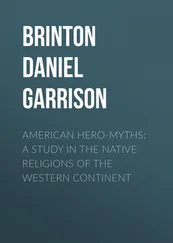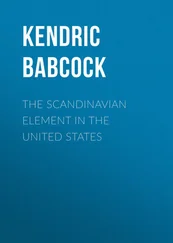Hubert Bancroft - The Native Races [of the Pacific states], Volume 5, Primitive History
Здесь есть возможность читать онлайн «Hubert Bancroft - The Native Races [of the Pacific states], Volume 5, Primitive History» — ознакомительный отрывок электронной книги совершенно бесплатно, а после прочтения отрывка купить полную версию. В некоторых случаях можно слушать аудио, скачать через торрент в формате fb2 и присутствует краткое содержание. Жанр: foreign_antique, foreign_prose, на английском языке. Описание произведения, (предисловие) а так же отзывы посетителей доступны на портале библиотеки ЛибКат.
- Название:The Native Races [of the Pacific states], Volume 5, Primitive History
- Автор:
- Жанр:
- Год:неизвестен
- ISBN:нет данных
- Рейтинг книги:5 / 5. Голосов: 1
-
Избранное:Добавить в избранное
- Отзывы:
-
Ваша оценка:
- 100
- 1
- 2
- 3
- 4
- 5
The Native Races [of the Pacific states], Volume 5, Primitive History: краткое содержание, описание и аннотация
Предлагаем к чтению аннотацию, описание, краткое содержание или предисловие (зависит от того, что написал сам автор книги «The Native Races [of the Pacific states], Volume 5, Primitive History»). Если вы не нашли необходимую информацию о книге — напишите в комментариях, мы постараемся отыскать её.
The Native Races [of the Pacific states], Volume 5, Primitive History — читать онлайн ознакомительный отрывок
Ниже представлен текст книги, разбитый по страницам. Система сохранения места последней прочитанной страницы, позволяет с удобством читать онлайн бесплатно книгу «The Native Races [of the Pacific states], Volume 5, Primitive History», без необходимости каждый раз заново искать на чём Вы остановились. Поставьте закладку, и сможете в любой момент перейти на страницу, на которой закончили чтение.
Интервал:
Закладка:
In Sahagun's version of the tradition we find Tamoanchan, 319the first home of the Nahua nations in America, definitely located down the coast from Pánuco in the province of Guatemala. The coast region of Tabasco was probably included in this author's time in Guatemala; at least it is as near Guatemala as the new-comers could get by following the coast. The location therefore agrees with that of Xibalba and the Votanic empire as derived from other sources; and in fact the whole narrative may with great plausibility be applied to the events described in the Quiché tradition – the arrival of Gucumatz and his companions (although Sahagun does not name Quetzalcoatl as the leader of the immigrants), the growth of a great power in the central region, and the final forced migration from Tulan Zuiva, the Seven Caves. The absence of the name Tulan, as applied to a city or county in Central America, from the northern traditions as they have been preserved for our examination, may be very satisfactorily accounted for by the fact that another great city founded much later in Anáhuac, the capital of the Toltec monarchy, was also called Tollan; consequently such traditions as the Spaniards gathered from the natives respecting a Tulan, were naturally referred by them to the later city. It is to be noted, moreover, in this connection, that the descriptions given by the Spanish writers of Tollan, with its luxuriant vegetation, and birds of brilliant plumage, often apply much better to the southern than to the northern Anáhuac. In addition to the points mentioned in the Quiché record, we learn from Sahagun that the Toltec calendar was invented or introduced during the stay in that southern country of Tamoanchan; 320that the Nahua power in the south extended north to Anáhuac and embraced Teotihuacan, a holy city and religious centre, even in those remote times; that the Olmecs, Miztecs, and Huastecs belonged to the same group of nations and their rise or appearance to the same period; and that from the Seven Caves the Toltecs migrated – that is their centre or capital was transferred – to Tulancingo, and later to Tollan. All these points we shall find confirmed more or less directly by other authorities.
A very important Nahua record, written in Aztec with Spanish letters by an anonymous native author, and copied by Ixtlilxochitl, which belonged to the famous Boturini collection, is the Codex Chimalpopoca . 321Unfortunately it has never been published, and its contents are only known by occasional references in the works of Brasseur de Bourbourg, who had a copy of the document. From the passages quoted by the abbé I take the following brief account, which seems of some importance in connection with the preceding:
"This is the beginning of the history of things which came to pass long ago, of the division of the earth, the property of all, its origin and its foundation, as well as the manner in which the sun divided it six times four hundred plus one hundred plus thirteen years ago to-day, the twenty-second of May, 1558." "Earth and the heavens were formed in the year Ce Tochtli; but man had already been created four times. God formed him of ashes, but Quetzalcoatl had perfected him." After the flood men were changed into dogs. 322After a new and successful attempt at creation, all began to serve the gods, called Apantecutli, 'master of the rivers,' Huictlollinqui, 'he who causes the earth to shake,' Tlallamanac, 'he who presides on the earth,' and Tzontemoc, 'he whose hair descends.' Quetzalcoatl remained alone. Then they said, "the vassals of the gods are born; they have already begun to serve us," but they added, "what will you eat, O gods?" and Quetzalcoatl went to search for means of subsistence. At that time Azcatl, the 'ant,' going to Tonacatepetl, 'mount of our subsistence,' for maize, was met by Quetzalcoatl, who said, "where hast thou been to obtain that thing? Tell me." At first the Ant would not tell, but the Plumed Serpent insisted, and repeated, "whither shall I go?" Then they went there together, Quetzalcoatl metamorphosing himself into a 'black ant.' 323Tlaltlauhqui Azcatl, the 'yellow ant,' 324accompanied Quetzalcoatl respectfully, as they went to seek maize and brought it to Tamoanchan. Then the gods began to eat, and put some of the maize in our mouths that we might become strong. 325The same record implies that Quetzalcoatl afterwards became obnoxious to his companions and abandoned them. 326
In this document we have evidently an account of substantially the same events that are recorded in the Tzendal and Quiché records: – the division of the earth by the Sun in the year 955 B.C., or as Ordoñez interprets the Tzendal tradition, by Votan 'about 1000 B.C.'; the formation of the earth by the supreme being, and the successive creations of man, or attempts to introduce civilization among savages through the agency of Quetzalcoatl, – acts ascribed by the Quiché tradition to the same person under the name of Gucumatz; the flood and resulting transformation of men into dogs, instead of monkeys as in the Popol Vuh , symbolizing perhaps the relapse into savagism of partially civilized tribes; – the adoption of agriculture represented in both traditions as an expedition by Quetzalcoatl, or Gucumatz, in search of maize. According to the Popol Vuh he sought the maize in Paxil and Cayala, 'divided and stagnant waters,' by the aid of Utïu, 'the coyote;' while in the Nahua tradition, aided by Azcatl, 'the ant,' he finds the desired food in Tonacatepetl, 'mount of our subsistence.' Finally, the Codex Chimalpopoca identifies the home of the Nahua nations, whence the search for maize was made, with Tamoanchan, which Sahagun has clearly located in Tabasco.
Before considering the traditions that relate the migration of the Toltecs proper to Tollan in Anáhuac, it will be most convenient to give the little that is known of those nations that are supposed to have preceded the Toltecs in Mexico. The chief of these are the Quinames, Olmecs, Xicalancas, Totonacs, Huastecs, Miztecs, Zapotecs, and Otomís. 327The Olmecs and Xicalancas, who are sometimes represented as two nations, sometimes as divisions of the same nation, are regarded by all the authorities as Nahuas, speaking the same language as the Toltecs, but settled in Anáhuac long before the establishment of the Toltec Empire at Tollan. As nations they both became extinct before the Spanish Conquest, as did the Toltecs, but there is little doubt that their descendants under new names and in new national combinations still lived in Puebla, southern Vera Cruz, and Tabasco – the region traditionally settled by them – down to the coming of the Spaniards. They are regarded as the first of the Nahua nations in this region and are first noticed by tradition on the south-eastern coasts, whither they had come in ships from the east. Sahagun, as we have seen, identifies them with certain families of the Nahuas who set out from Tamoanchan to settle in the northern coast region. Ixtlilxochitl tells us they occupied the land in the third age of the world, landing on the east coast as far as the land of Papuha, 328'muddy water,' or in the region about the Laguna de Terminos. Veytia names Pánuco as their landing-place, and gives the date as a few years after the regulation of the calendar, already noticed in Sahagun's record. 329Their national names are derived from that of their first rulers Olmecatl and Xicalancatl. Two ancient cities called Xicalanco are reported on the gulf coast; one of them, which flourished nearly or quite down to the time of the Conquest, and whose ruins are still said to be visible, 330was just below Vera Cruz; the other, probably the more ancient, stood at the point which still bears the name of Xicalanco at the entrance to the Laguna de Terminos. This whole region is also said to have borne the name of Anáhuac Xicalanco. 331Mendieta and Torquemada 332relate that the followers of Xicalancatl peopled the region towards the Goazacoalco, where stood the two cities referred to. The people of that part of the country were generally known at the time of the Conquest as Nonohualcas. The chief development of this people, or of its Olmec branch, was, so far as recorded in tradition, in the state of Puebla further north and inland.
Читать дальшеИнтервал:
Закладка:
Похожие книги на «The Native Races [of the Pacific states], Volume 5, Primitive History»
Представляем Вашему вниманию похожие книги на «The Native Races [of the Pacific states], Volume 5, Primitive History» списком для выбора. Мы отобрали схожую по названию и смыслу литературу в надежде предоставить читателям больше вариантов отыскать новые, интересные, ещё непрочитанные произведения.
Обсуждение, отзывы о книге «The Native Races [of the Pacific states], Volume 5, Primitive History» и просто собственные мнения читателей. Оставьте ваши комментарии, напишите, что Вы думаете о произведении, его смысле или главных героях. Укажите что конкретно понравилось, а что нет, и почему Вы так считаете.
![Hubert Bancroft The Native Races [of the Pacific states], Volume 5, Primitive History обложка книги](/books/749157/hubert-bancroft-the-native-races-of-the-pacific-s-cover.webp)









![Hubert Bancroft - The Native Races [of the Pacific states], Volume 1, Wild Tribes](/books/750126/hubert-bancroft-the-native-races-of-the-pacific-s-thumb.webp)

